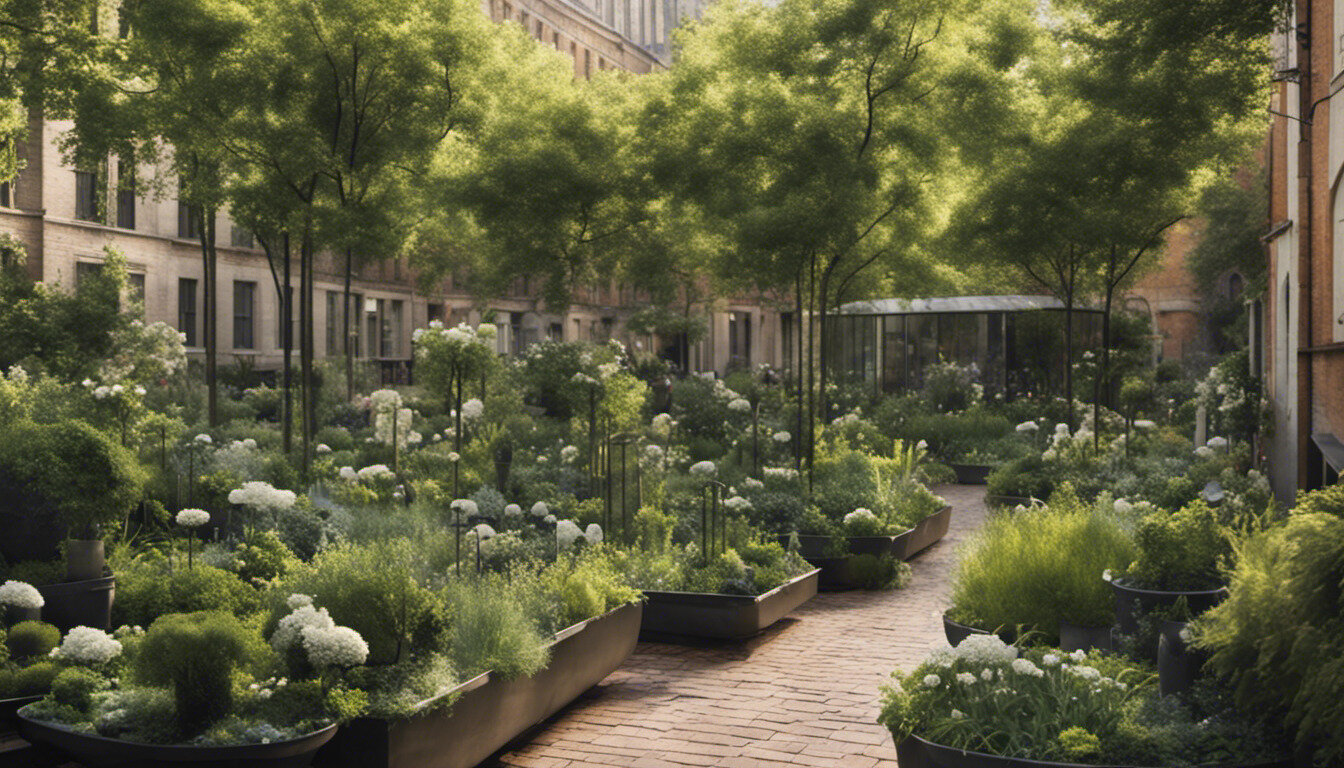Our City Blooming PDFs
Our City Blooming PDFs
Blog Article
City Blooming Fundamentals Explained
Table of ContentsCity Blooming Fundamentals ExplainedGet This Report on City Blooming9 Simple Techniques For City BloomingThe Facts About City Blooming Uncovered5 Easy Facts About City Blooming Described
Interested in growing food for sale in the City of Chicago? Below is a checklist of regularly asked questions pertaining to the guidelines and laws that cultivators must consider when intending an urban farming task.
The zoning modification does not change any various other codes handling composting, building authorizations, acquiring or renting City had residential or commercial property, service licenses or environmental contamination. There are existing codes that manage these concerns and they stay in full effect and might be relevant to your job. Neighborhood yards are normally owned or handled by public entities, civic organizations or community-based organizations and preserved by volunteers.
Urban ranches grow food that is intended to be offered, either on a not-for-profit or for-profit basis. Due to their commercial function, metropolitan farms need a service certificate.
Getting My City Blooming To Work
Composting is allowed yet just for plant product that is produced and made use of on site. The quantity of garden compost product can not surpass 25 cubic backyards at any given time according to the standards in 7-28-715 of the City's Municipal Code. Yes. Because the dirt at the majority of new garden sites needs amending, garden compost, soil, wood chips, or other materials can be obtained to construct or boost the expanding room - balcony and patio garden design.

If a structure license is required then the hoophouse will be considered an accessory structure. You can find out even more about the structure authorization requirements by contacting the Department of Structures. The 25,000-square-foot dimension limit is meant to stop a single community yard from controling a provided block or interfering with the block's existing property or industrial character.
The restriction does not use to yards found in Public Open Space (POS) districts. Can there be more than one community garden that is 25,000 square feet on a single block? Fencing is not required, however, gardens that have huge car parking areas might be required to install secure fencing or other landscaping attributes.
An Unbiased View of City Blooming
B1 & B2 districts call for that all industrial use activities be that site performed inside. Is secure fencing needed for city ranches? Fencings may be called for, along with landscaping and screening, for particular car parking areas and outdoor work or storage areas depending on location and the details activity taking place.
Yes. Urban farms need building licenses and zoning authorizations before building and construction. Other types of city review may be required depending on certain frameworks, activities, dimension, landscaping, licensing, public health and stormwater monitoring problems. A number of these demands are identified in the job design or permitting process, however, the applicant may be responsible to independently recognize details licenses or permits that might be called for.
The Division of Business Matters and Customer Security can aid figure out the certain kind of organization license that's called for. Off street auto parking is required for the majority of industrial tasks in Chicago. The needed number of vehicle parking areas is based on the number of staff members working on site and not the square video of the growing space.
Everything about City Blooming

Yes. An urban ranch can sell compost product created on website, nonetheless, the operation must abide with the regulations in 7-28-715 of the Chicago Municipal Code. Yes. Aquaponic systems are enabled inside on urban ranches in numerous zoning districts. However, a zoning evaluation and structure license is called for in order to mount frameworks or systems and a company certificate is needed as defined above.
Approximately five hives or nests of honey might be kept as an accessory usage. Beekeepers need to sign up with the Illinois Division of Farming. For more details about the suggested zoning modification you may get in touch with the Department of Housing and Economic Development, Bureau of Preparation and Zoning at 312.744.8563.
Farming in cities and city areas A metropolitan farm in Chicago. Urban farming refers to different methods of growing. https://clean-gondola-5c7.notion.site/City-Gardening-Transforming-Urban-Spaces-7213d2fdc6c341e8bd8975e4c2f79126?pvs=4, processing, and dispersing food in metropolitan areas. The term also relates to the location activities of pet husbandry, tank farming, beekeeping, and cultivation in an urban context. Urban agriculture is distinguished from peri-urban farming, which takes location in country areas at the edge of suburbs.
More About City Blooming
, who seek to create social networks established on a shared ethos of nature and area holism. These networks can develop by means of formal institutional assistance, ending up being incorporated right into regional town planning as a "shift town" motion for lasting city advancement.
The much more straight access to fresh vegetable, fruit, and meat items that might be become aware through city agriculture can improve food safety and security and food safety while lowering food miles, leading to reduced greenhouse gas discharges, therefore adding to climate change mitigation. Some of the first proof of city farming originates from Mesopotamia.
Report this page